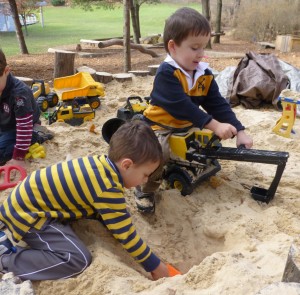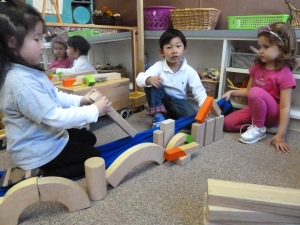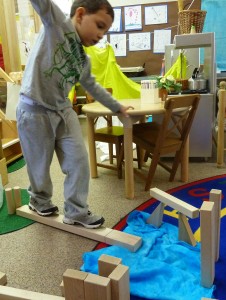 One of the most important experiences we try to encourage in Pre-K is teamwork. All young children start out convinced that they are the only ones on the planet that have an opinion or idea worth pursuing. As they get older, they begin to realize that others’ ideas are not necessarily the same as their own.
One of the most important experiences we try to encourage in Pre-K is teamwork. All young children start out convinced that they are the only ones on the planet that have an opinion or idea worth pursuing. As they get older, they begin to realize that others’ ideas are not necessarily the same as their own.
Young children frequently play near one another, even engage in similar activities, but do not work together. This is called associative play. They may or may not be using the same toys or equipment, but they are in the same space. Commonly, they don’t even notice that the other person is present. You’ve seen the debacles that can occur when two children’s plans for one toy intersect. For children at this stage, we support them by providing an ample amount of toys to choose from. When an argument ensues, we help the children voice their desires. We literally ask each child what he or she wants. Once both children have stated what they want, we either find that the problem is solved (they actually want different things) or we work with them to find a solution.
As the children grow, associative play develops into more intricate and involved cooperative play. This play looks more like what we remember as children. A pair or group of children work together to design a plot and a goal. For instance, they might decide that they are on a dragon hunt. They might plan where they will look, which tools they will use and where the dragon is hiding. In our class, we call this “sharing the story”. We encourage the children to allow each child involved to have some part in the story creation. At times, a group will have one person who prefers to make up the entire tale themselves and direct everyone else. This is developmentally appropriate as they are only beginning to see that other people have opinions and feelings. However, we frequently remind them that individuals always get to choose what they wish to play. If I am telling Katie that she has to be the bad witch, she does not have to agree. She can either choose to be something else or she can choose to play in a different group. I do not have the right to insist that she do what I want. This can be a bit painful for some children when they realize that they can’t control the universe, but that is why we are here, to guide them through it.






